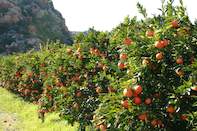
To make it easier for growers to understand the risk they are taking when choosing a new cultivar, Citrogold has categorised their cultivars into four groups, namely Experimental, Early Followers, Semi-Commercial and Commercially Recommended.
According to Citrogold, cultivars in the experimental category are still in the early stages of commercialisation and would be tested on farms in a couple of rows in different climatic regions, tested for true-to-typeness of the cultivar and act as a demonstration site to prospective growers.
Potential cultivars are then selected from these and planted as nursery trees, normally on different rootstocks, with their compatibility on different rootstocks, shipping trials and market acceptability being evaluated in the Early Followers Category.
During the semi-commercial evaluation period, medium to long term points are investigated by researchers, growers and marketers, such as soil suitability and marketing requirements, before they are moved to the Commercially Recommended category.
In the latter category, most production and marketing nuances of the cultivar are known and growers can, with little or no risk, plant the cultivar with success within known parameters, as is the case with Nadorcott that has been on the market for over twenty-five years.
Cultivars that have proven themselves internationally might skip the first category in these evaluations or even be fast-tracked to the Commercially Recommended category from the start. This can only happen if enough information and data is available to address concerns and challenges that might arise and is applicable to the region in which the new cultivar will be released.
A farmer who embraces new technologies might be keen to plant a couple of orchards even while cultivars are in the experimental stage, especially if these have already proven themselves worthwhile in other countries and are already available in the market.
Depending on the cultivar, this could give these producers a competitive edge, by improving yields, easing production management or providing consumers with a new eating experience. If the cultivars are already well established in the market, it could also allow producers in the Southern Hemisphere to address shortages that occur during the off-season in the Northern Hemisphere.
Conservative farmers, on the other hand, might prefer to wait for the cultivars to have undergone all the tests and evaluations before planting new cultivars.
 A wide range of soft citrus varieties is planted in South Africa. This can roughly be divided into three groups: mandarins, clementines, and...
A wide range of soft citrus varieties is planted in South Africa. This can roughly be divided into three groups: mandarins, clementines, and...